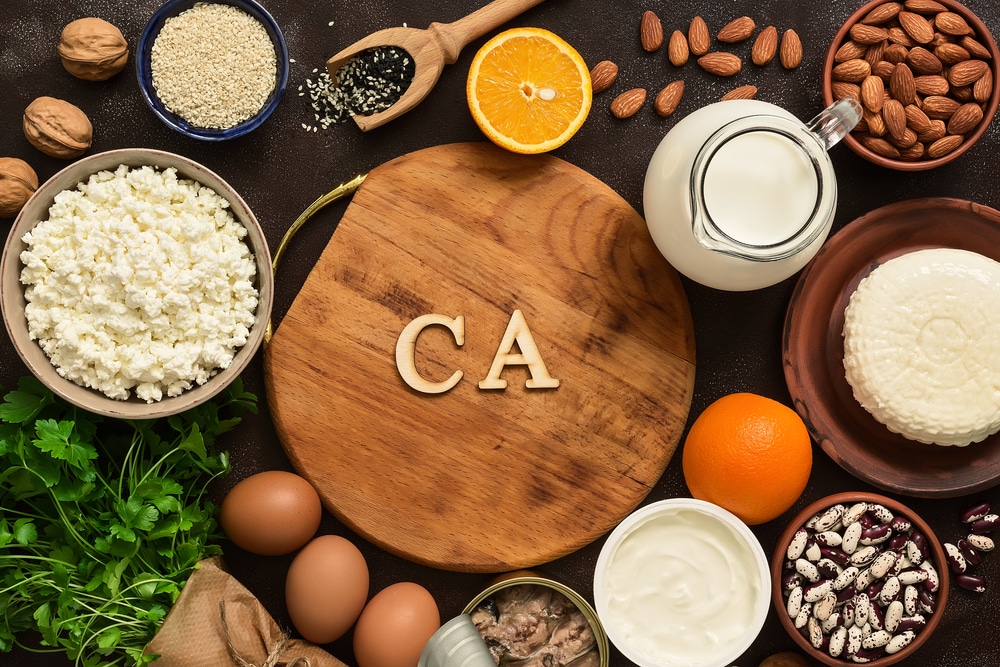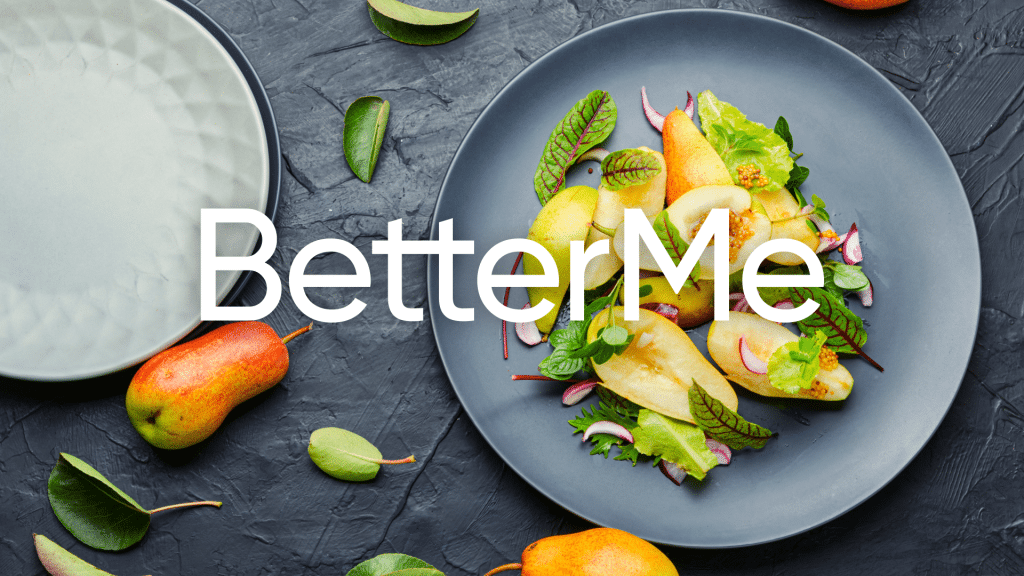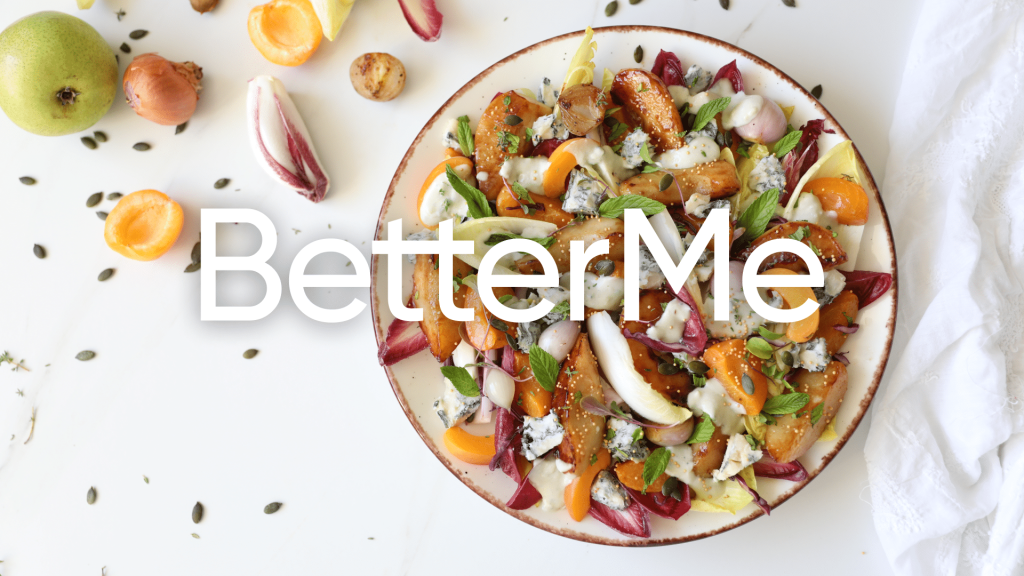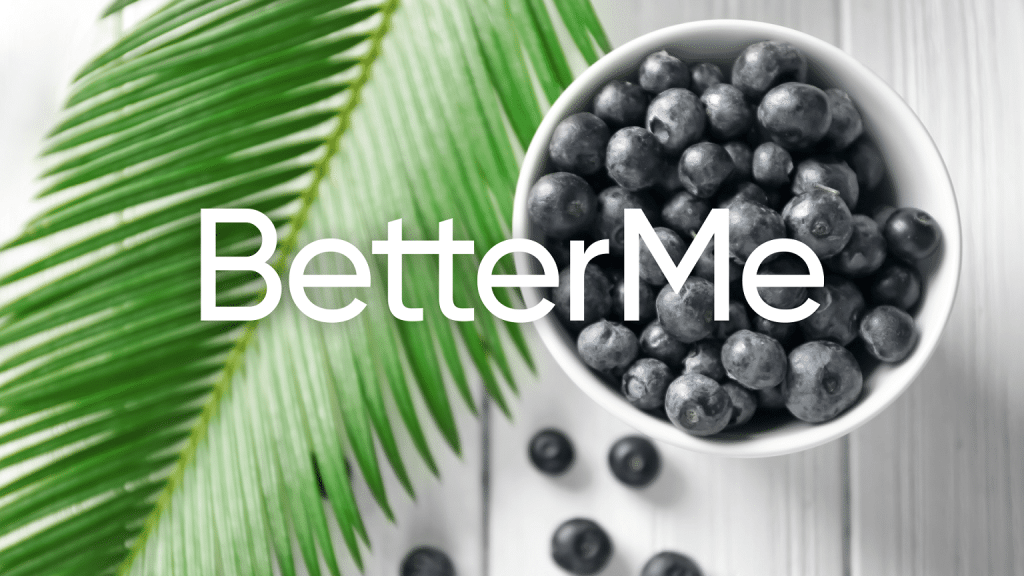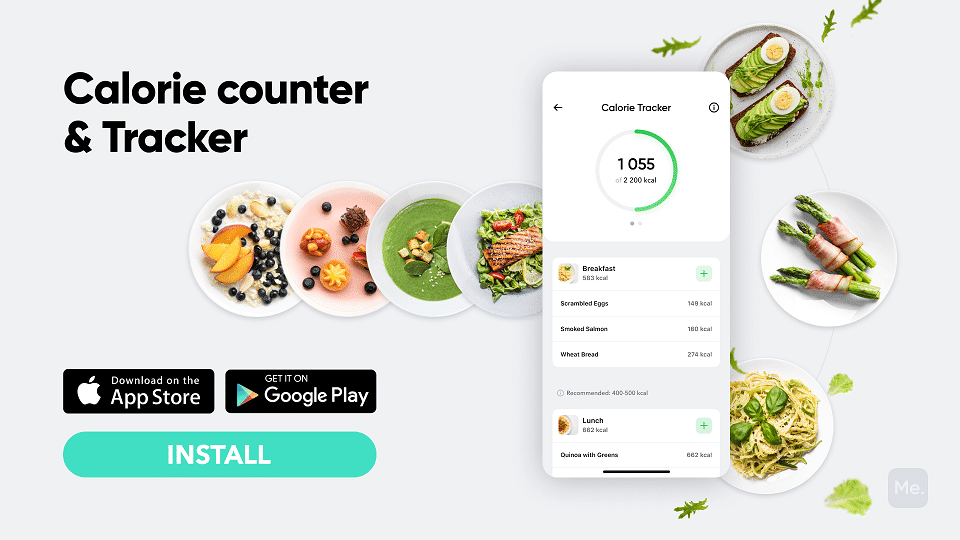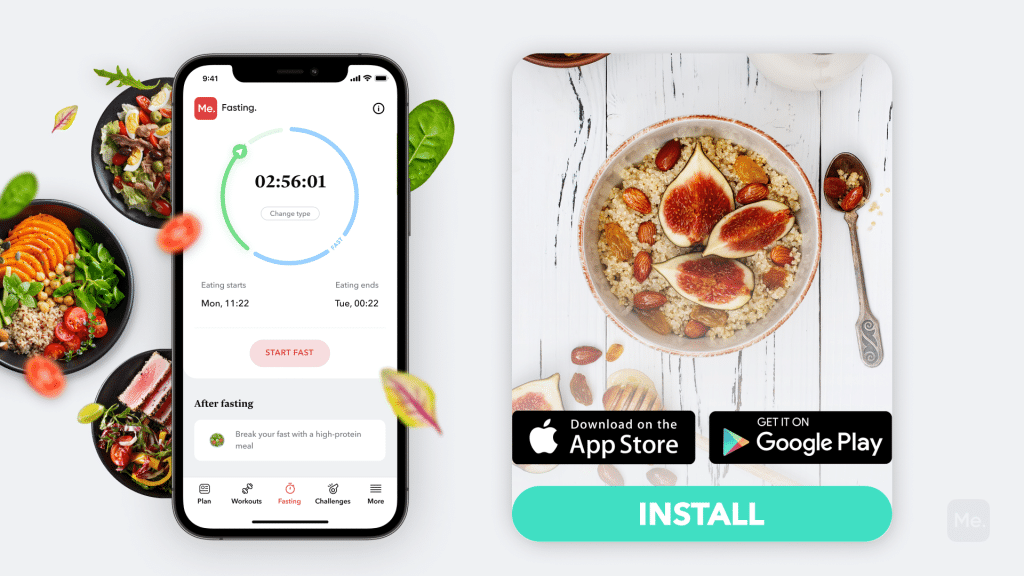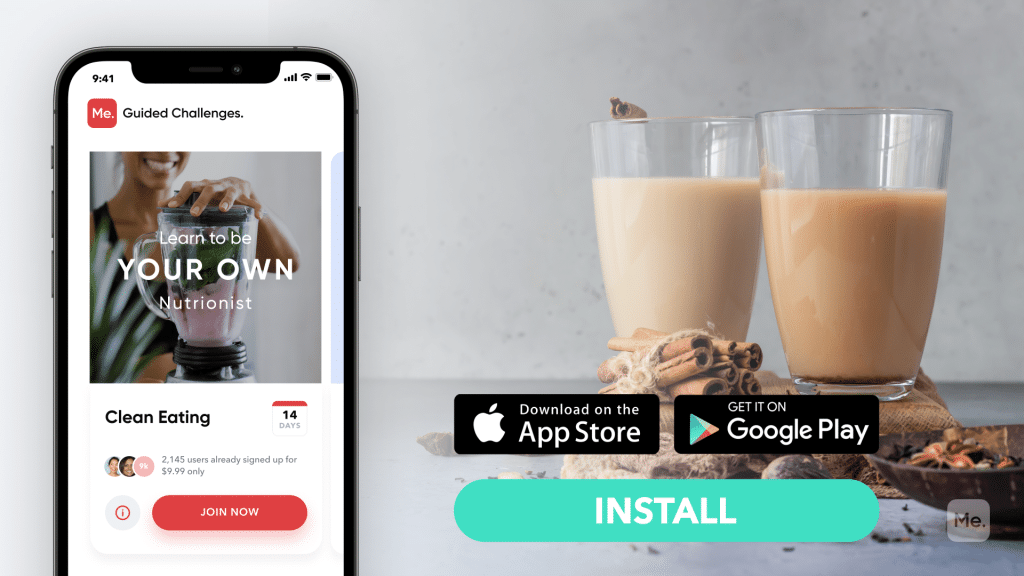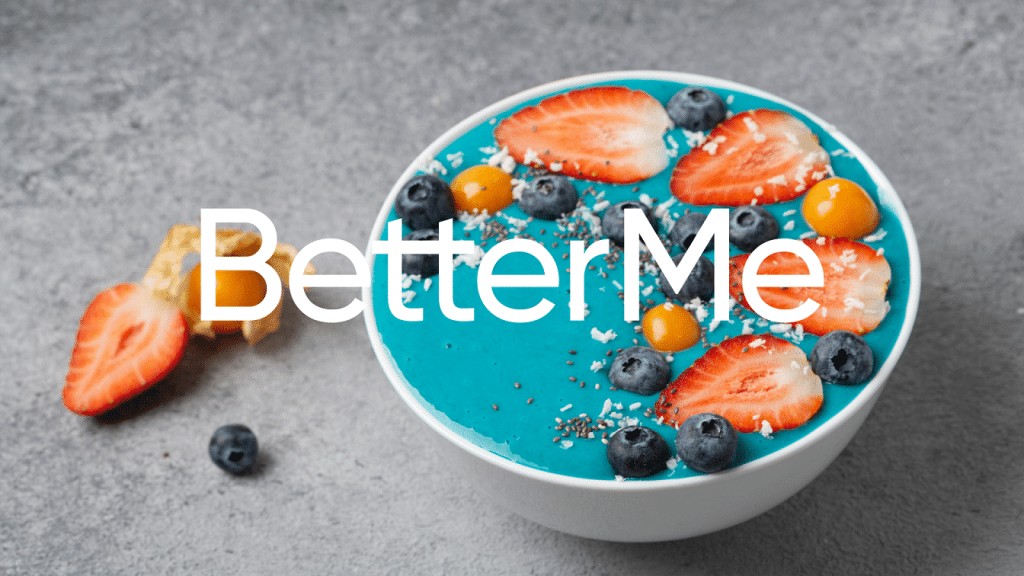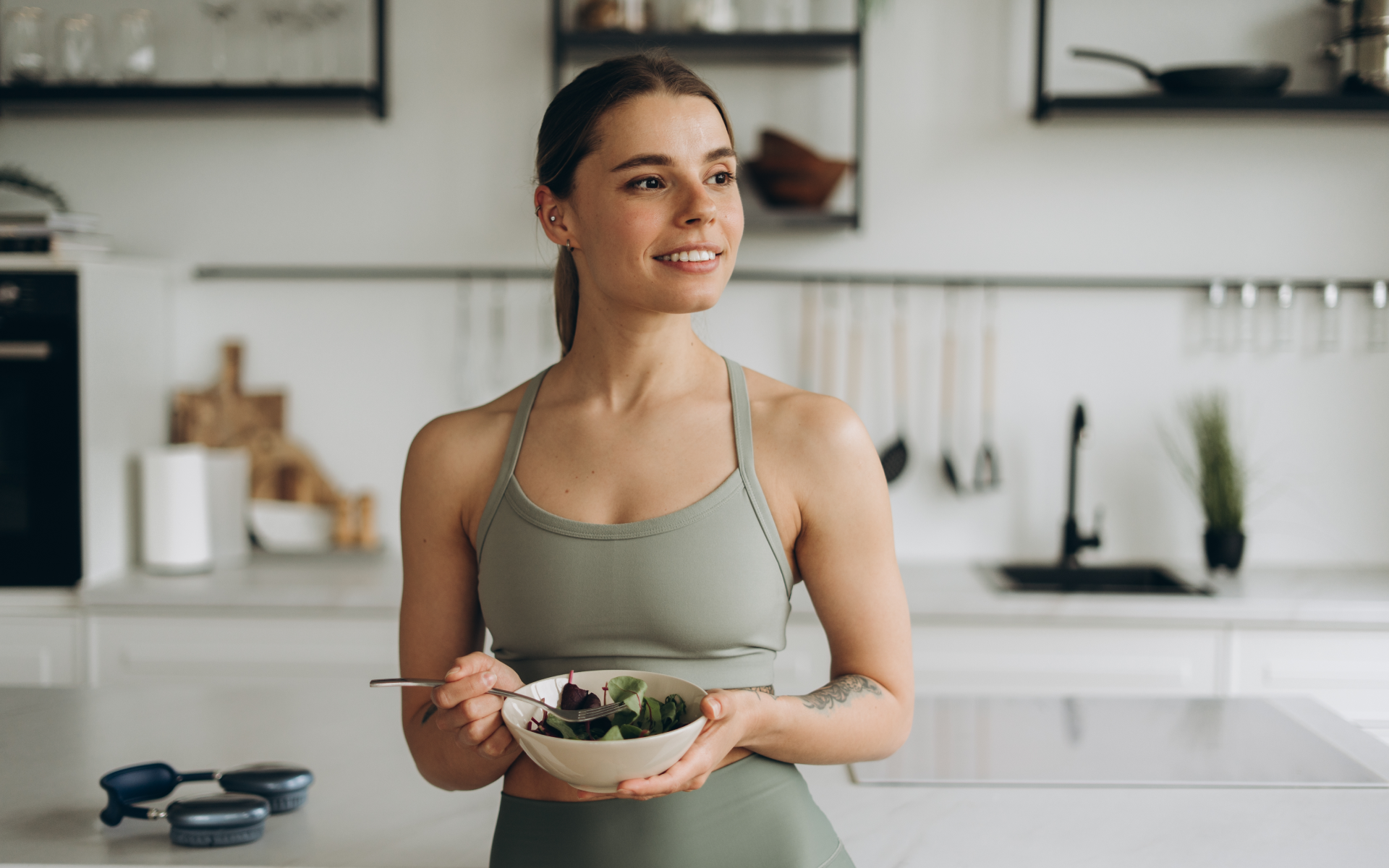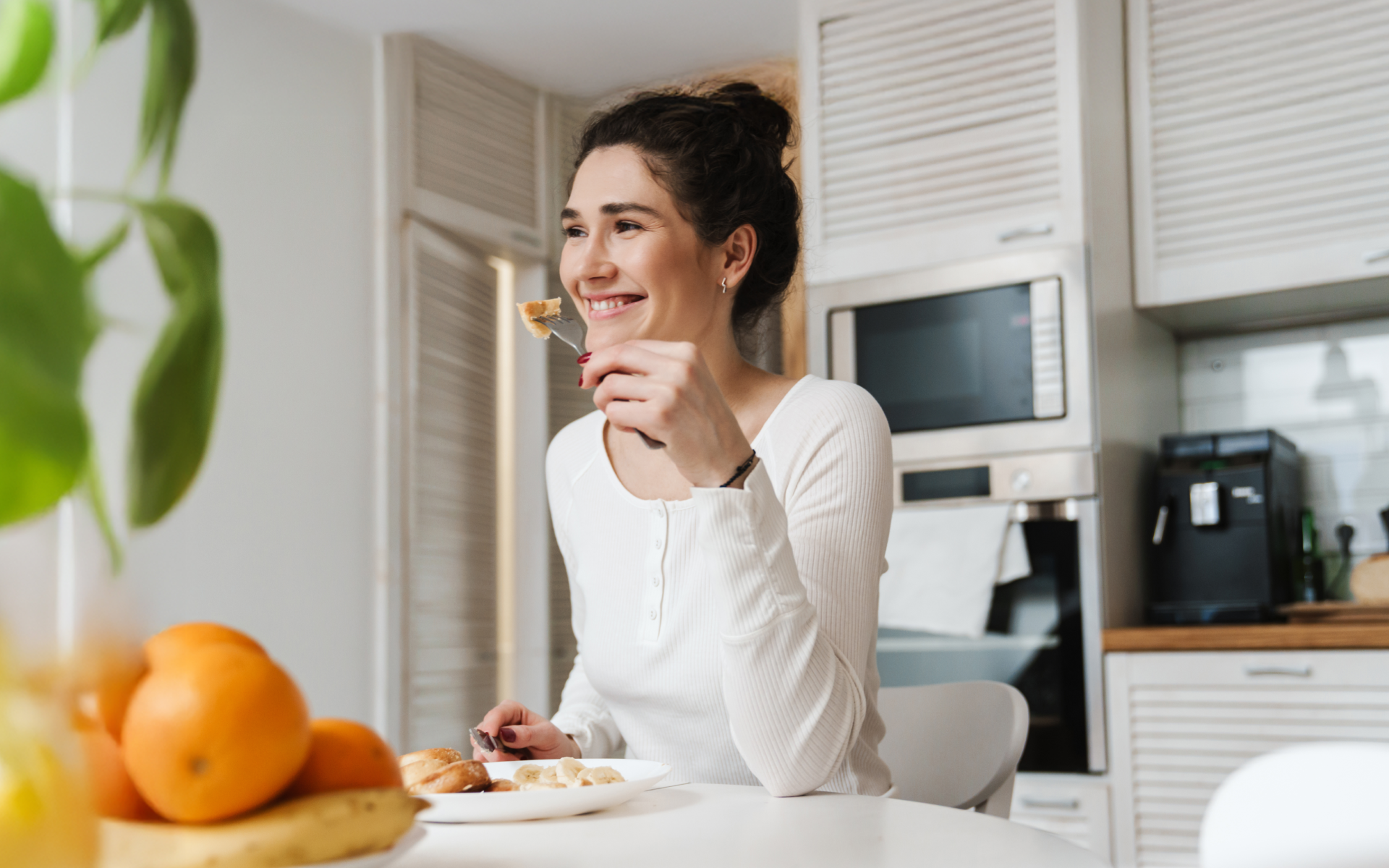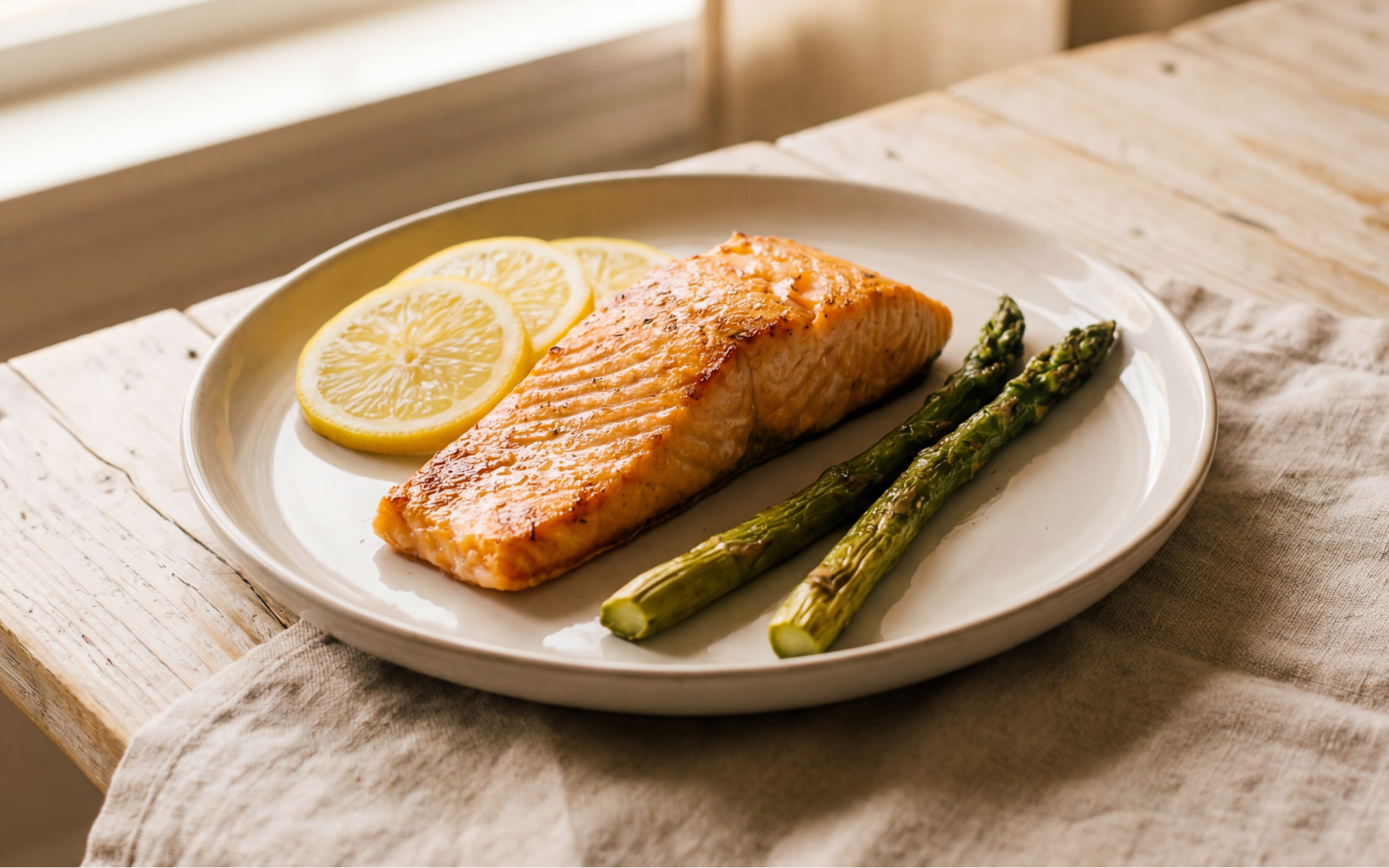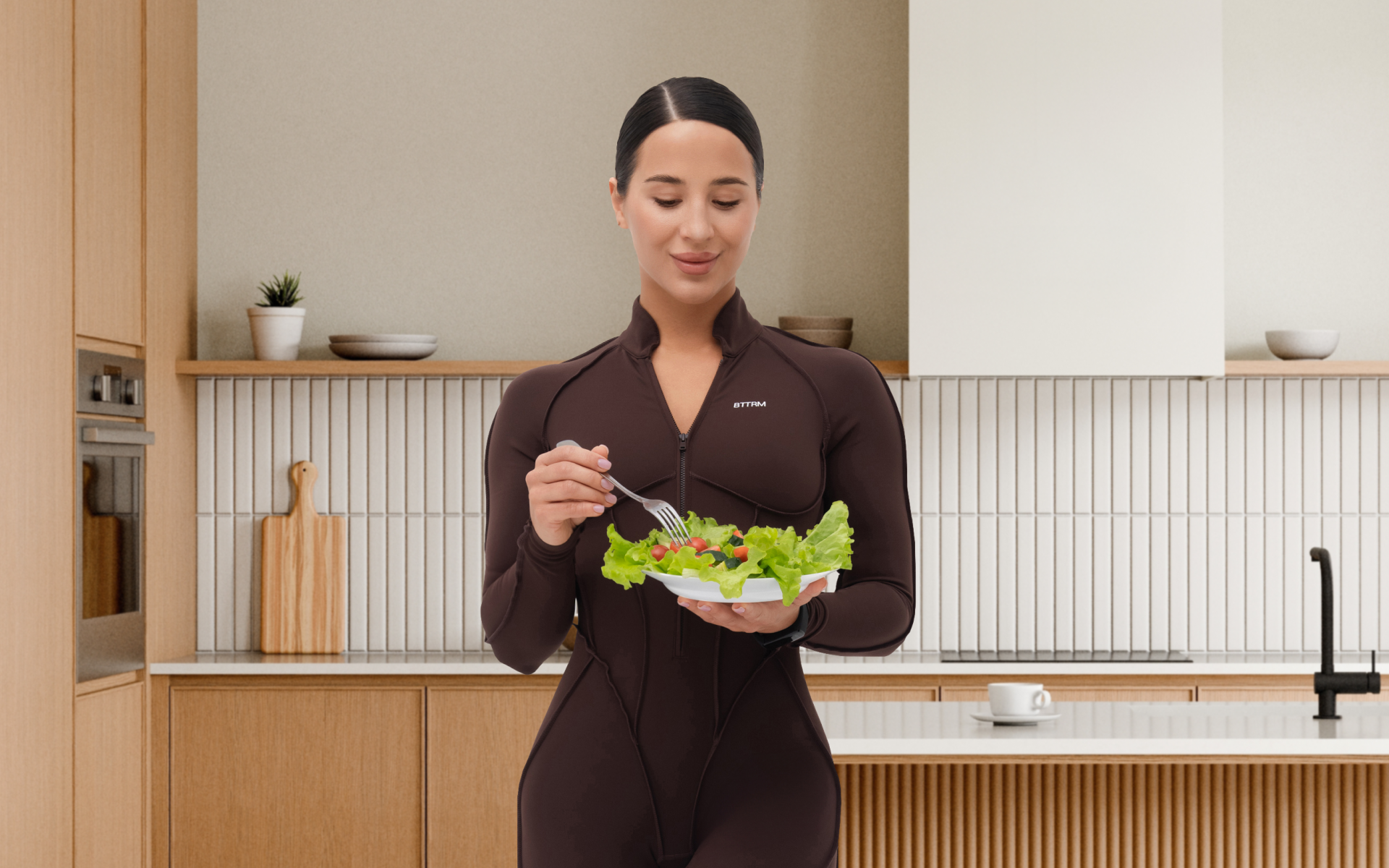Osteoporosis is a condition that causes the bones to become weak and brittle. This can lead to serious health problems, such as fractures and disability (5). There is no cure for osteoporosis, but there are treatments that can help prevent it from getting worse. A healthy diet is an important part of any treatment plan. Many people wonder, “can osteoporosis be reversed with diet? The answer is no, but it can help. The right diet can help keep bones stronger and might reduce the risk of fractures. It might also slow the progression of osteoporosis. However, it cannot completely reverse the condition.
Get your personalized
meal plan!
Essential Nutrients For An Osteoporosis Healthy Diet
When you have osteoporosis, you need to make sure you’re getting enough of the right nutrients to keep your bones healthy and strong. These include:
Calcium
This is the most important nutrient for bone health. It’s responsible for bone formation and maintenance (3). The body needs calcium to function properly, and it doesn’t store it well. This means you need a continuous supply from your diet.
Good sources of calcium include:
- Dairy products such as milk, cheese, and yogurt
- Leafy green vegetables such as kale and spinach
- Sardines and other fatty fish
- Tofu
- Almonds
- Fortified foods such as breakfast cereals, orange juice, and soy milk.
- Sun exposure.
Vitamin D
Vitamin D helps the body absorb calcium. It also plays a role in bone formation and maintenance. Vitamin D deficiency is common, especially in older adults. This can lead to osteoporosis and other health problems (19).
Good sources of vitamin D include:
- Fatty fish such as tuna, salmon, and mackerel
- Egg yolks
- Mushrooms
- Fortified foods such as milk, orange juice, and cereals.
Read More: 7-Day Anemia Diet Plan To Increase Iron Absorption
Vitamin K
Vitamin K is important for bone health. It helps the body absorb and use calcium. Vitamin K also plays a role in blood clotting (20).
Vitamin K deficiency is rare, but it can lead to osteoporosis and other health problems (20).
Good sources of vitamin K include:
- Leafy green vegetables such as broccoli, kale, and spinach
- Cabbage
- Soybeans
- Pork
- Chicken
- Eggs
Protein
Protein is essential for muscle and bone health. It helps the body make and maintain muscle mass. Protein also plays a role in blood clotting and wound healing (9).
A lack of protein can lead to muscle weakness, which may increase the risk of falls and fractures (4).
Good sources of protein include:
- Meat
- Poultry
- Fish
- Eggs
- Beans
- Nuts
- Tofu
Vitamin C
Vitamin C performs many important functions in the body, including wound healing and collagen production. Collagen is a protein that helps keep bones strong (18).
Vitamin C deficiency, while rare, can lead to a condition called scurvy, which can cause problems with bone formation (17).
Good sources of vitamin C include:
- Citrus fruits such as oranges and grapefruits
- Strawberries
- Bell peppers
- Tomatoes
- Potatoes
BetterMe app will kick you out of the mental funk, shake off your extra weight, rid you off your energy-zapping habits, and help you sculpt the body of your dreams. Intrigued? Hurry up and change your life for the better!
Magnesium
Magnesium is a mineral that’s involved in many processes in the body, including muscle contraction, nerve function, and blood sugar control. It’s also necessary for bone health (8).
Magnesium deficiency can lead to osteoporosis, as well as other health problems (8).
Good sources of magnesium include:
- Leafy green vegetables such as spinach
- Nuts and seeds such as pumpkin seeds and almonds
- Fish
- Beans
- Whole grains
Phosphorus
Phosphorus is a mineral that’s essential for bone health. It works with calcium to keep bones strong (6). Phosphorus is found in many foods, especially meat, poultry, fish, dairy products, and beans/legumes.
Zinc
Zinc is a mineral that’s involved in many processes in the body, including cell growth, wound healing, and immune function. It’s also necessary for bone health. Low intakes of zinc have been linked to osteoporosis (22).
Good sources of zinc include:
- Meat
- Poultry
- Seafood
- Beans
- Nuts and seeds
Read More: Men’s Diet Plan To Lose Belly Fat
Foods To Limit Or Avoid On The Osteoporosis Diet
In addition to getting enough of the right nutrients, it’s also important to limit or avoid certain foods that can harm bone health. These include:
Salty Foods
Excess salt consumption can lead to calcium loss. This can weaken bones and increase the risk of osteoporosis (13).
Processed Foods
Processed foods are often high in salt, sugar, and unhealthy fats. They’re also low in bone-building nutrients such as calcium, vitamin D, and phosphorus.
Unsoaked Beans/Legumes
Beans are healthy and contain nutrients important for bone health, but they contain substances called phytates which can bind to minerals such as calcium and zinc (10). This would mean they are less available to the body.
To reduce the effects of phytates, soak beans overnight before cooking them (11). You can also sprout them or cook them with a food that’s high in vitamin C, such as tomatoes.
Wheat Bran
Wheat bran is the outer layer of wheat grain. It contains most of the minerals in wheat that are good for bone health, but also phytates that can bind to minerals and make them less available to the body (10).
To reduce the effects of phytates, soak wheat bran overnight before eating it. You can also sprout it or cook it with a food that’s high in vitamin C, such as tomatoes.
Too Much Vitamin A
Vitamin A is an essential nutrient, but too much can be harmful. Vitamin A toxicity is thought to be linked to osteoporosis (16).
Foods that are high in preformed vitamin A include liver, cod liver oil, and some fortified foods. If you take a supplement, make sure it doesn’t exceed the recommended daily intake of 3,000 micrograms (10,000 IU) for adults (15).
Getting most of your vitamin A from precursor sources such as beta carotene and other carotenoids doesn’t lead to toxicity as your body processes these differently.
Caffeine
Caffeine can increase calcium loss and lead to bone loss (2). Caffeine is found in coffee, tea, soda, energy drinks, and chocolate. If you do consume caffeine, do so in moderation.
Limit caffeine intake to less than 300 mg per day. This is about 2-3 cups (16-24 ounces) of coffee.
Alcohol
Drinking too much alcohol can lead to bone loss. It can also interfere with the body’s ability to absorb calcium and other nutrients that are essential for bone health (21).
If you drink alcohol, limit your intake to no more than 2 drinks per day for men and 1 drink per day for women.
Sugary Foods And Drinks
Too much sugar can lead to weight gain, which would then put extra stress on bones and joints and possibly increase the risk of falls if you have osteoporosis (7).
Cutting back on sugary foods and drinks is good for overall health, as well as bone health.
Lean and toned up body isn’t just a far-fetched fantasy. Check out the BetterMe app and watch it propel your weight loss journey into high gear!
7 Day Osteoporosis Diet Plan
Following this diet plan for osteoporosis could help improve your bone health and reduce your risk of fractures.
Day 1
- Breakfast: Omelet with vegetables and whole-grain toast
- Lunch: Grilled chicken salad with olive oil dressing
- Dinner: Salmon with roasted Brussels sprouts and sweet potato
- Snacks: Carrot sticks with hummus, plain yogurt with berries
Day 2
- Breakfast: Scrambled eggs with tomatoes and whole-grain toast
- Lunch: Tuna salad with olive oil dressing
- Dinner: Chicken stir fry with vegetables
- Snacks: Apple slices with peanut butter, cottage cheese with peaches
Day 3
- Breakfast: Banana peanut butter smoothie
- Lunch: Grilled cheese sandwich with tomato soup
- Dinner: Beef tacos with lettuce and tomatoes
- Snacks: Celery sticks with almond butter, Greek yogurt with berries
Day 4
- Breakfast: Whole-grain cereal with milk and berries
- Lunch: Turkey sandwich on whole grain bread
- Dinner: Pork chops with roasted potatoes and broccoli
- Snacks: Cucumber slices with hummus, cottage cheese with pineapple
Day 5
- Breakfast: Blueberry muffin with yogurt
- Lunch: Chicken salad with whole grain bread
- Dinner: Shrimp scampi with pasta
- Snacks: Banana with peanut butter, carrot sticks with ranch dressing
Day 6
- Breakfast: Oatmeal with raisins and milk
- Lunch: Veggie burger on whole-grain bun
- Dinner: Salmon with rice and vegetables
- Snacks: Strawberries with whipped cream, celery sticks with peanut butter
Day 7
- Breakfast: Whole grain toast with avocado and egg
- Lunch: Tuna salad with whole-grain crackers
- Dinner: Chicken stir fry with rice and vegetables
- Snacks: Grapes, yogurt with granola
Tips For Following An Osteoporosis Diet
There are a few things you can do to make following an osteoporosis diet easier:
Plan Ahead
Meal and snack planning would help you make sure you’re getting the nutrients you need.
Prepping food in advance would also make it easier to stick to your diet when you’re short on time.
Make Healthy Swaps
If you’re used to eating ultra processed foods, it may take some time to adjust to a diet that’s rich in whole foods.
To make the transition easier, start by making healthy swaps of some of your favorite foods. For example, if you love mac and cheese, try making a healthier version with whole wheat pasta and low-fat cheese.
Find Creative Ways To Add Bone-Building Foods To Your Diet
If you’re struggling to get enough calcium and vitamin D, there are plenty of creative ways to add them to your diet.
For example, you can add powdered milk to smoothies or soups, or eat yogurt with breakfast. You can also talk to your doctor or dietitian about taking a supplement if you’re having trouble meeting your needs through diet alone.
Make It Convenient
Make bone-healthy foods more convenient. Stock your kitchen with easy-to-prepare foods that are rich in calcium, vitamin D, and other nutrients that are essential for bone health.
Cutting up fruits and vegetables, cooking in bulk, and freezing leftovers can all help make healthy eating more convenient.
Consider Supplements
If you can’t get enough of certain nutrients from food, you may need to take supplements. This is especially true if you’re at risk for osteoporosis or you have the condition.
You’re at risk of osteoporosis if you (1):
- are a woman over age 50
- are a man over age 70
- have a family history of the condition
- are thin or have a small frame
- have certain medical conditions like Crohn’s disease or celiac disease
- take medications that can cause bone loss, such as steroids or anticonvulsants
Some people may need to take supplements even if they don’t have any risk factors for osteoporosis. This is often the case for older adults, since they may not absorb nutrients as well from food as they did when they were younger.
If you’re considering taking supplements, talk to your doctor first. They can help you determine if you need them and, if so, which ones are best for you.
Can Exercise Help Prevent Osteoporosis?
Yes, exercise can help prevent osteoporosis. Weight-bearing exercises like walking, jogging, and dancing can help strengthen bones and slow bone loss (14).
Other exercises, such as yoga and Tai Chi, can also help improve balance and reduce the risk of falls, which is a common cause of fractures in people with osteoporosis (12).
If you have osteoporosis, it’s important to talk to your doctor before starting an exercise program. They may help you create a safe workout plan that won’t put you at risk of further injury.
Consulting a doctor is especially important if you have osteoporosis that’s severe enough to cause fractures. In these cases, exercises that put weight on the bones, like running or jumping, could actually make the condition worse.
The Bottom Line
Osteoporosis is a serious condition that can lead to fractures and disability. But there are things you can do to lower your risk.
Eating a healthy diet is one of the best ways to protect your bones. A diet for osteoporosis should include plenty of calcium, vitamin D, and other nutrients that are essential for bone health.
If you’re at risk of osteoporosis or you have the condition, your doctor may also recommend supplements. But it’s important to talk to them first, as not everyone needs them.
DISCLAIMER:
This article is intended for general informational purposes only and does not serve to address individual circumstances. It is not a substitute for professional advice or help and should not be relied on for making any kind of decision-making. Any action taken as a direct or indirect result of the information in this article is entirely at your own risk and is your sole responsibility.
BetterMe, its content staff, and its medical advisors accept no responsibility for inaccuracies, errors, misstatements, inconsistencies, or omissions and specifically disclaim any liability, loss or risk, personal, professional or otherwise, which may be incurred as a consequence, directly or indirectly, of the use and/or application of any content.
You should always seek the advice of your physician or other qualified health provider with any questions you may have regarding a medical condition or your specific situation. Never disregard professional medical advice or delay seeking it because of BetterMe content. If you suspect or think you may have a medical emergency, call your doctor.
SOURCES:
- A comprehensive overview on osteoporosis and its risk factors (2018, ncbi.nlm.nih.gov)
- Caffeine intake increases the rate of bone loss in elderly women and interacts with vitamin D receptor genotypes (2001, academic.oup.com)
- Calcium Intake in Bone Health: A Focus on Calcium-Rich Mineral Waters (2018, mdpi.com)
- Dietary Protein and Vitamin D Intake and Risk of Falls: A Secondary Analysis ofPostmenopausal Women from the Study of Osteoporotic Fractures (2016, ncbi.nlm.nih.gov)
- Diseases of Bone – Bone Health and Osteoporosis – NCBI Bookshelf (2004, ncbi.nlm.nih.gov)
- Effects of Excessive Dietary Phosphorus Intake on Bone Health (2017, ncbi.nlm.nih.gov)
- Fat, Sugar, and Bone Health: A Complex Relationship (2017, mdpi.com)
- Magnesium in Prevention and Therapy (2015, mdpi.com)
- Physiology, Proteins (2021, ncbi.nlm.nih.gov)
- Phytate: impact on environment and human nutrition. A challenge for molecular breeding (2008, ncbi.nlm.nih.gov)
- Reduction of phytic acid and enhancement of bioavailable micronutrients in food grains (2015, ncbi.nlm.nih.gov)
- Review article Balance control in elderly people with osteoporosis (2014, sciencedirect.com)
- Salt intake, hypertension, and osteoporosis (2009, pubmed.ncbi.nlm.nih.gov)
- The Effectiveness of Physical Exercise on Bone Density in Osteoporotic Patients (2018, hindawi.com)
- Vitamin A and Carotenoids – Health Professional Fact Sheet (2022, ods.od.nih.gov)
- Vitamin A intake and the risk of hip fracture in postmenopausal women: the Iowa Women’s Health Study (2007, ncbi.nlm.nih.gov)
- Vitamin C Deficiency (2021, ncbi.nlm.nih.gov)
- Vitamin C in Disease Prevention and Cure: An Overview (2016, ncbi.nlm.nih.gov)
- Vitamin D and Bone Health; Potential Mechanisms (2010, mdpi.com)
- Vitamin K and bone (2017, ncbi.nlm.nih.gov)
- What People Recovering From Alcoholism Need To Know About Osteoporosis (2011, bones.nih.gov)
- Zinc and its importance for human health: An integrative review (2013, ncbi.nlm.nih.gov)
